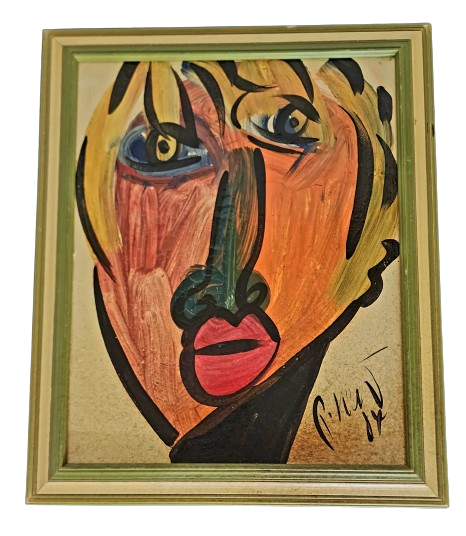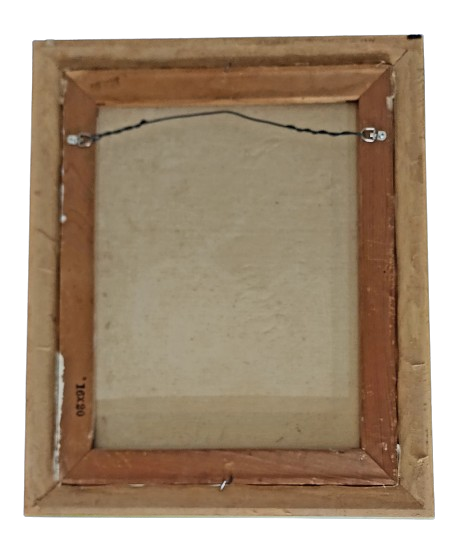
Oil Paint


Peter Keil Andy Warhol 84 Yellow Original Oil Painting by Peter Keil
Andy Warhol's 84 Yellow Original Oil Painting by Peter Keil is a one-of-a-kind artwork on framed canvas by The Wild Man of Berlin, a famous contemporary artist. 1984 Signed by Peter Keil & Dated Oil Painting on Foam Core Panel Vintage Framed Original Framed Artwork Size 19.5x23.5. All of Peter Keil's Art Used Thick Paint & Some Paint Flaking May Be Present Due to the Age and Nature of His Work—painting of Stylized Andy Warhol. Decoding the Vibrant Legacy of Peter Keil Through "Andy Warhol's 84 Yellow" "Andy Warhol's 84 Yellow" is a striking exemplar of Peter Keil's contribution to contemporary art, particularly within pop and street art. A unique piece on framed canvas, this original oil painting captures the essence of Keil's distinct style, known for its vigorous application of paint and bold color choices. Created in 1984, this signed, dated work by The Wild Man of Berlin reflects Keil's dynamic approach to portraiture, underpinned by a deep understanding of the pop art movement. Peter Keil, a celebrated figure in the landscape of modern art, earned his moniker through his untamed style and the vivid expressionism that courses through his creations. His portrayal of Andy Warhol, an icon of pop art, in "Andy Warhol's 84 Yellow" is a testament to Warhol's influence on Keil's artistic journey. The painting's dimensions, 19.5x23.5 inches, frame Warhol's stylized visage, depicted with a palette emphasizing striking yellows, suggesting the luminosity and complexity of the subject's character. The Impact of Peter Keil's Artistic Techniques on Collectability One of the defining characteristics of Keil's work is his use of thick paint, which lends a textural depth to his paintings that is visual and tactile. This method, which often leads to some paint flaking, is not a detriment but rather a signature aspect of Keil's work, reflecting the authentic passage of time and the organic nature of his materials. Collectors of Keil's art are drawn to these peculiarities, finding beauty in the imperfections that echo the artist's raw energy and enthusiasm for his creative process. Keil's "Andy Warhol's 84 Yellow" is more than a mere depiction; it is an immersive experience, inviting the viewer to delve into the psyche of both the artist and the subject. The painting's distinct aesthetic bridges street pop art and graffiti artwork with the more traditional oil medium on canvas, creating a piece that is as at home in a gallery as it would be on the vibrant streets where street art thrives. In acquiring a work like "Andy Warhol's 84 Yellow," one engages with a slice of art history, a moment captured by Keil's brush that speaks to the enduring dialogue between artists across generations. It is an artwork that holds its value in its visual appeal and its place within the narrative of art's evolution. "Andy Warhol's 84 Yellow" encapsulates Peter Keil's raw and expressive approach to art that has cemented his reputation as a prominent contemporary artist. With its thick layers of vibrant paint and stylized depiction of Andy Warhol, this painting is a passionate ode to the influences and intersections of pop art, street art, and graffiti artwork. Keil's works, sought after for their expressive power and historical significance, continue to resonate with collectors and enthusiasts around the globe.
$750.00



